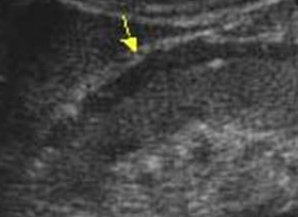What is a forniceal rupture? - Definition, Symptoms, Causes, Treatment
The forniceal rupture is a urine leak that occurs in the perirenal space and is brought on by ureteric blockage. It is believed to be caused by a buildup of urine that increases the pressure in the renal pelvis, which in turn causes one or more renal fornices to leak urine. Most cases of renal forniceal rupture are related to obstruction from distal ureteric stones, however, malignant extrinsic ureteric compression and spontaneous rupture due to ureteropelvic junction syndrome are other possible causes.
Forniceal rupture is associated with a 25% risk of developing perinephric abscess, urinoma, and urosepsis, all of which have the potential to cause significant morbidity and mortality. In simple situations, a conservative approach is effective.
Definition
Perirenal urine leakage due to ureteric blockage is radiographically identified as a forniceal rupture. It is believed to be caused by a build-up of urine in the renal pelvis and may be more prevalent with tiny distal ureter stones. In circumstances where complications are not present, surgical intervention is a possibility for treatment.

Symptoms
Forniceal rupture symptoms mostly include nausea, vomiting, fever, mild to severe stomach pain, and flank discomfort. The presence of hydronephrosis or extravasations of fluid can be detected by diagnostic imaging techniques like ultrasonography and intravenous urography. Smaller distal ureteric stones have a greater propensity to spontaneously rupture the membrane. Although conservative care is an option for simple instances, it is crucial to remember that complications like perinephric abscess formation and urosepsis can significantly increase the likelihood of a patient experiencing a morbid outcome. In certain circumstances, prompt action is often required to avoid the development of further complications.
Causes
The blockage that is brought on by distal ureteric stones is the root cause of the vast majority of renal forniceal ruptures. In addition to cervical cancer with obstructive uropathy, other causes include malignant or benign extrinsic ureteric compression, obstruction at the pelvic-ureteric junction or vesicoureteric junction (VUJ), obstruction at the bladder outlet, and obstruction at the ureters. Forniceal rupture that happens for no known reason is called "spontaneous forniceal rupture." Conservative therapy or surgical intervention may be necessary to treat renal forniceal rupture, depending on the etiology.
Diagnosis
Imaging techniques that provide a cross-sectional view, such as CT-Urography and non-contrast computed tomography (NCCT), are frequently used to diagnose forniceal rupture (NCCT). It occurs more frequently with smaller distal ureteric stones. Conservative therapy is an acceptable choice in cases of uncomplicated forniceal rupture. This involves keeping the patient under monitoring and administering antibiotics, although 39 percent of patients may need a nephrostomy tube or stent if they show signs of infection or kidney failure. In certain circumstances, surgery may be required to prevent future complications.
Treatment
The treatment of forniceal rupture is contingent on the severity of the ailment and any related consequences. Conservative management is often advised when there are no complexities involved. Medications like tamsulosin 0.4 mg taken orally once a day can be used as part of a medically supervised expulsive therapy program that also includes analgesics and antibiotics. Sometimes, medical help is required to get rid of the stone or treat the symptoms of sepsis. It is crucial to examine the stone's size and position in the ureter when evaluating treatment alternatives.
 Reviewed by Simon Albert
on
February 12, 2023
Rating:
Reviewed by Simon Albert
on
February 12, 2023
Rating:











